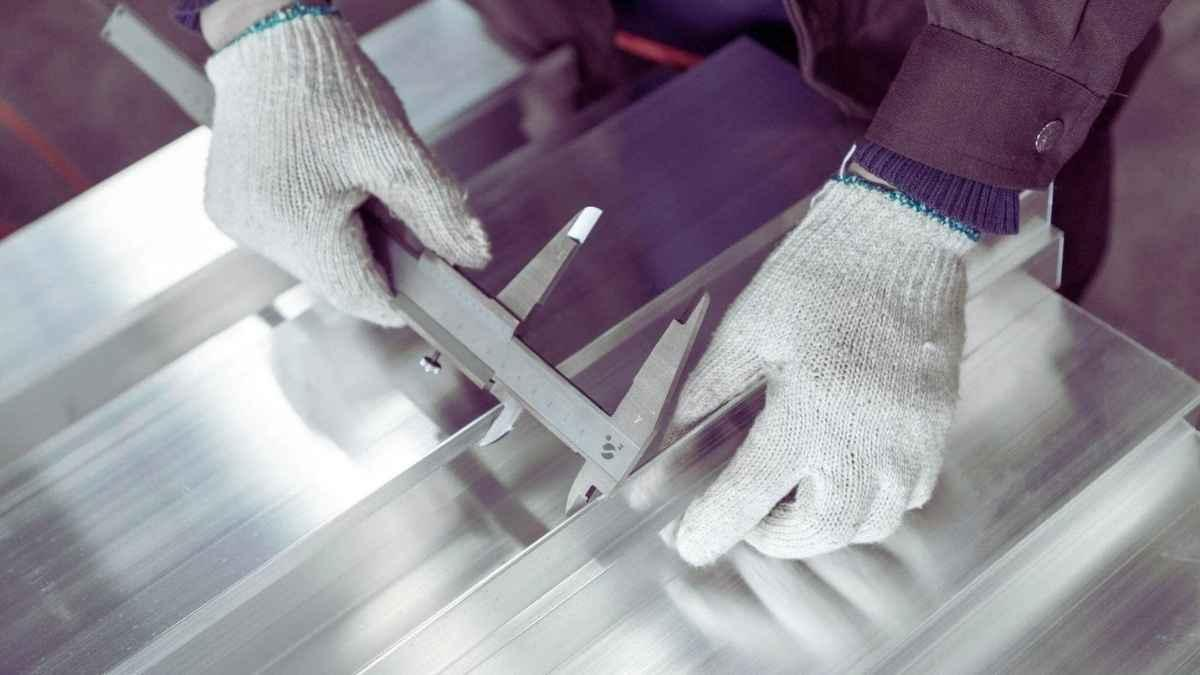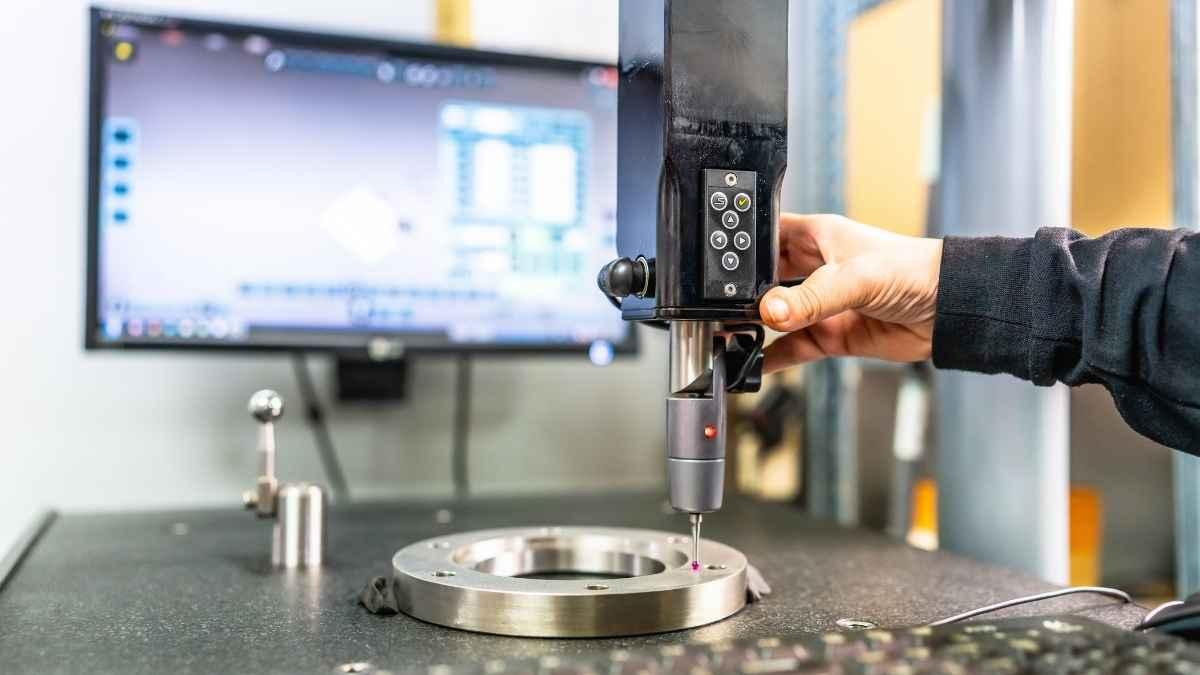La lavorazione a tolleranza stretta è un processo di produzione in parte, con tolleranze dimensionali molto strette. In questo processo, we give a very small tolerance around the desirable size — here we are talking about fractions of a mm.» Manufacturing components for industries such as aerospace, settore automobilistico, medico, and electronics demand tight tolerances.
Significance of Tight Tolerance
When components must fit onto one another perfectly or function in well-defined environments, an ill-dimensioned part can result in a malfunction. Tight tolerance machining is used to guarantee that parts are aligned, ensuring their function and reliability over time.
What Makes it Difficult to Achieve Tight Tolerances
It’s a challenge to get tight tolerances. That takes precision, the right gear, and technique. How accurately you can machine parts depends on a variety of factors, such as machine capability, tool wear, proprietà dei materiali, e condizioni ambientali.
13 Tips to Achieve Tight Tolerance Machining
We’ll cover 13 critical tips to help you deliver tight tolerances in your machining process.
Mancia 1: Use High-Quality Machines
A high-precision CNC machine forms the tight tolerance machining basis. Find machines that provide high rigidity and low thermal growth. High repeatability machines with higher control systems ensure precision for every cut.
Mancia 2: Scegli il materiale giusto
When tight tolerances are required, material selection can play a huge part. Altri, Compreso acciaio inossidabile E titanio, are much more stable and easier to machine at high precision. Altri, such as plastics or softer metals, could run into problems such as warping or expanding when subjected to heat.
Mancia 3: Ensure Proper Tooling
Choosing tooling is of utmost importance today. Tools need to be sharp, durevole, and specific to the material being machined. Dull or worn tools contribute to inaccurate cuts, so they must be regularly inspected, if not replaced.
Mancia 4: Choose Proper Cutting Speeds
Other machining applications require tighter tolerances, which are difficult to maintain with improper cutting speeds. The faster it goes, the more likely that the material or tool overheats. Troppo veloce, and you might add undue stress or uneven cutting. Get the best speed of the material and tool you have.
Mancia 5: Control Cutting Forces
When you cut, you want to make the cutting forces smaller because they would deform the workpiece. Make shallow cuts instead of deep or heavy cuts to avoid deviating from the material. Proper tool selection and feeding rates also help contain cutting forces.
Mancia 6: Maintain Machine Tools in Excellent Condition
The key to keeping CNC machines and tooling running within tight tolerances is maintenance. Even if your machines are operating perfectly, it’s still important to clean and lubricate them, check them for worn-out parts, and calibrate them regularly.
Mancia 7: Control Environmental Factors
Le variazioni di temperatura possono avere il loro pedaggio sia sul materiale che sulla macchina. Utilizzare un seminario controllato a temperatura con la minima quantità di espansione termica possibile. Anche lievi variazioni di temperatura causano cambiamenti dimensionali nel materiale da lavorare.
Mancia 8: Utilizzare un bloccaggio adeguato
Durante la lavorazione delle tolleranze strette, La proprietà del lavoro sicura è essenziale. È necessario che l'oggetto da lavorato non si muova durante il funzionamento. Rimanere fedeli alle tue dimensioni significa che la tua parte non si muoverà mai o vai da nessuna parte quando lo trattenga con chucks di precisione, infissi, e morsetti.
Mancia 9: Avoid Part Distortion
Durante lavorazione, Alcuni materiali, Soprattutto i metalli, tendono a distorcere. Usa una miscela di velocità di taglio e profondità per evitarlo. Inoltre, Possono essere utilizzate tecniche come i trattamenti termici per il rilievo di stress o la lavorazione in scena per ridurre al minimo la distorsione.
Mancia 10: Traccia l'abbigliamento degli utensili e la qualità degli utensili
La precisione di lavorazione può essere fortemente influenzata dalla condizione dello strumento di taglio. Gli strumenti usurati possono anche portare a tagli incoerenti e infine influenzare le dimensioni. Per mantenere coerente il processo di lavorazione, Gli strumenti devono essere ispezionati regolarmente e sostituiti secondo necessità.
Mancia 11: Use a Fine Finish Pass
Per parti ad alta precisione, È generalmente una buona pratica fare un bel passaggio di finitura dopo aver sgranato. Questo passaggio finale si assicura che la parte arrivi alla sua dimensione precisa e alla finitura superficiale, Ridurre la rielaborazione.
Mancia 12: Utilizzare strumenti di misurazione ad alta precisione
Quando si lavora con tolleranze strette, Gli strumenti di misurazione devono essere accurati. D. Qualificazione e verifica: Use micrometers, digital calipers, and CMM to check spec/measurements at various points in the process. Measure twice during machining at critical points.
Mancia 13: Hire Operators with Experience
Seasoned machinists understand how to turn feeds, velocità, and tooling to get the results they want. They give attention to detail and these are the ones that can spot the problems before they turn into tolerance issues. Make sure you have the best of the best by investing in skilled operators.
Challenges in Tight Tolerance Machining
While tight tolerances are achievable, they can present challenges, including material variations, tool wear, and even small environmental changes. Tuttavia, these drawbacks can be diminished with accurate planning, quality gear, and professional performance.
Conclusione
Tight tolerance machining is an important aspect of many industries, but to achieve it, Ci deve essere attenzione ai dettagli, Il giusto tipo di macchinari, e un'attenta gestione di vari fattori. Dall'investimento in macchine top di gamma all'usura di monitoraggio frequentemente, questi 13 I suggerimenti ti aiuteranno a ottenere i risultati di cui hai bisogno, ottenere la precisione richiesta per le tue parti, E mantieni tutto in funzione.
La precisione è tutto quando si tratta di lavorazione a tolleranza stretta. COSÌ, Segui questi suggerimenti per rimanere un passo avanti!
Domande frequenti
Q1: Cosa è Tolleranza nel mondo delle macchine?
La tolleranza stretta si riferisce al processo di realizzazione di parti le cui dimensioni sono estremamente vicine al bersaglio, in genere poche millesimi di pollice (0.005"O meno). Si tratta di assicurarsi che ogni parte sia progettata con precisione, e funziona in modo affidabile, which is especially crucial in high-stakes industries like aerospace and medical devices.
Q2: Is a tight tolerance affected by cutting speed?
Cutting speed matters a lot. Too quickly, and it can overheat the material, making it expand or warp. Troppo lento, and you run the risk of making rough cuts. The trick is to find that sweet spot, where the tool moves efficiently but doesn’t sacrifice the precision of the part.
Q3: What are the steps to minimize tool wear when cutting tight tolerances?
You cannot prevent tool wear, but to slow it down, you can use quality tools including carbide to reduce wear. A good premise (speeds and feeds), the right coolant, and regular checks on your tools will help keep them sharp and consistent, good for tight tolerances.
Q4: Does material selection affect achieving tight tolerance?
SÌ, definitely. Other materials, such as aluminum or stainless steel, can be machined to a high degree of precision more readily. Softer materials can be difficult because they tend to deform, but harder materials may require you to machining at slower speeds to prevent this issue while retaining tight tolerances.
Q5: Which measuring tools are used for tight tolerance?
Coordinare le macchine di misurazione (CMMS) are the best tools available to measure tight tolerances—they’re very accurate. If you’re checking manually, digital micrometers and calipers are must-haves. Laser Micrometers Work Best For Non-Contact Measuring









1 pensato a “Macchinatura a tolleranza stretta – 13 Suggerimenti per raggiungerlo”